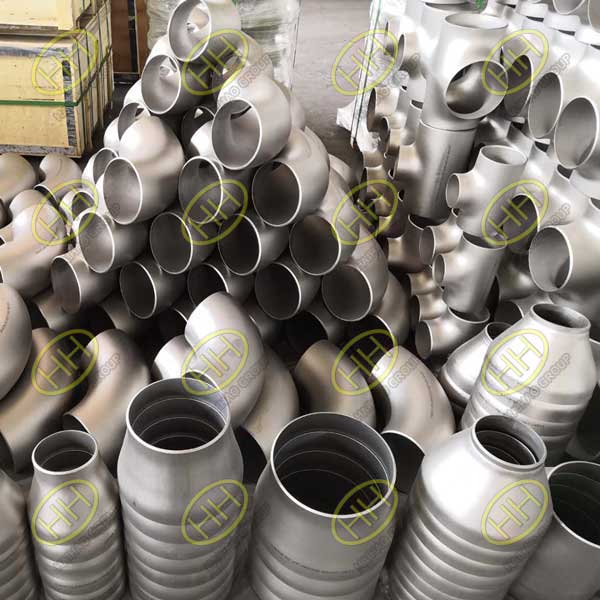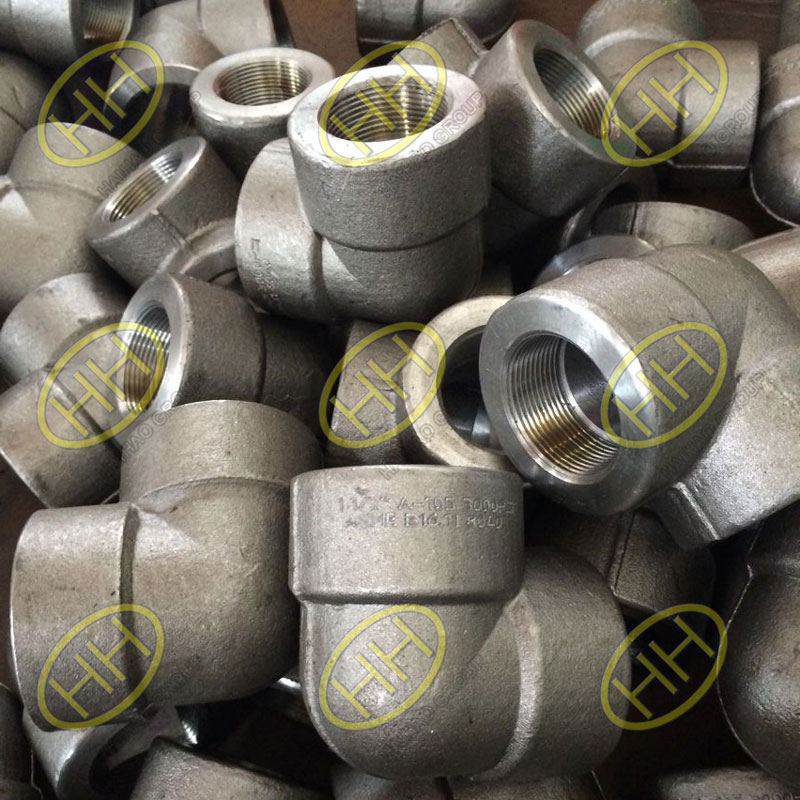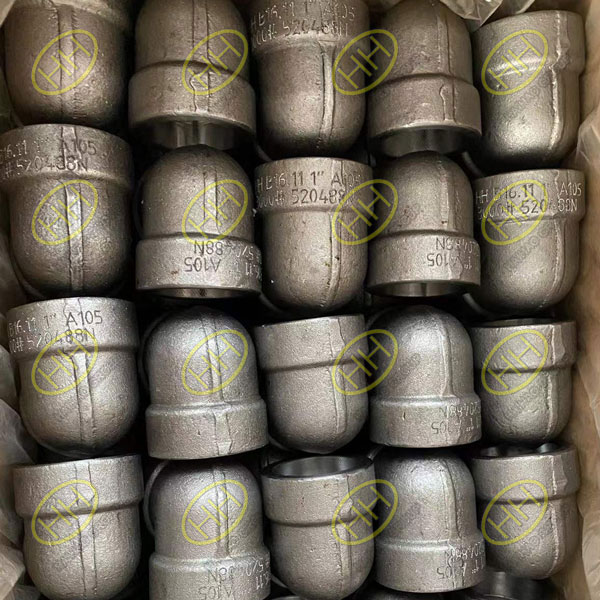What’s the difference between butt welded pipe fittings and forged pipe fittings?
When it comes to piping systems, two popular options for connecting pipes are butt weld pipe fittings and forged pipe fittings. While both serve the same purpose, there are significant differences between them that affect their application, performance, and cost. In this article, we will introduce the differences between butt weld pipe fittings and forged pipe fittings, helping you make the best choice for your piping system.

Carbon steel butt welding pipe fittings
Butt welding pipe fittings refer to a type of pipe fitting used to join two pieces of pipe together through a welding process. These fittings have a beveled end that can be inserted into the pipe where the two pieces will be welded together, and they are commonly used in industrial applications such as petrochemical, power generation, and oil and gas.Haihao Grup can produce various types of butt weld pipe fittings,includingelbows, tees, reducers, caps, bends, and other custom fittings. These fittings can be made from various materials, including carbon steel, stainless steel, and alloy steel.

Stainless steel pipe fittings
Haihao Group manufactures butt welded pipe fittings according to various international standards, such as
ASME/ANSIB16.9,ASME/ANSIB16.28,EN,JIS,GOST,etc.Haihao Group can produce butt welded fittings in a variety of sizes and dimensions, with some of the most common sizes ranging from 1/2 “to 24” diameter.These fittings can also be customized to meet customer specific requirements.Butt welding pipe fittings are widely used in different industries such as chemical processing, oil and gas, water treatment, and many others. They are designed to be strong, durable, and able to withstand high pressure and extreme temperatures, making them ideal for use in harsh industrial environments.

ANSI ASME B16.11 ASTM A105 threaded 90 degree elbows
Forged pipe fittings, on the other hand, are produced using a forging process, wherein metal is heated and then hammered or pressed into the desired shape.Our forged pipe fittings contain socket weld pipe fittings and threaded pipe fittings. They are available in a wide range of product types, including elbows, tees, reducers, couplings, caps, and unions, among others.Haihao Group can produce forged pipe fittings according to international standards, such as ASME B16.11, MSS-SP-79, MSS-SP-83, etc.

ASME B16.11 A105 Socket Weld 90 Degree Elbows
Forged steel fittings have higher strength and durability compared to butt weld fittings and are commonly used in high-pressure and high-temperature applications. They are available in a range of materials, including carbon steel, stainless steel, and alloy steel. Forged steel fittings are commonly used in systems that require high performance and reliability, such as oil and gas pipelines, chemical processing, and power generation.
Another significant difference between butt weld and forged steel pipe fittings is their cost. Butt weld fittings are generally less expensive than forged steel fittings due to their manufacturing process and material usage. However, this cost difference can vary depending on the specific application and the materials used.
Butt weld pipe fittings and forged steel pipe fittings have distinct differences in their manufacturing process, performance, and cost. Butt weld fittings are commonly used in high-pressure piping systems that require frequent disassembly or maintenance, while forged steel fittings are preferred in high-pressure and high-temperature applications that demand high strength and reliability. By understanding these differences, you can choose the best fitting for your piping system, ensuring optimal performance and cost-effectiveness.

